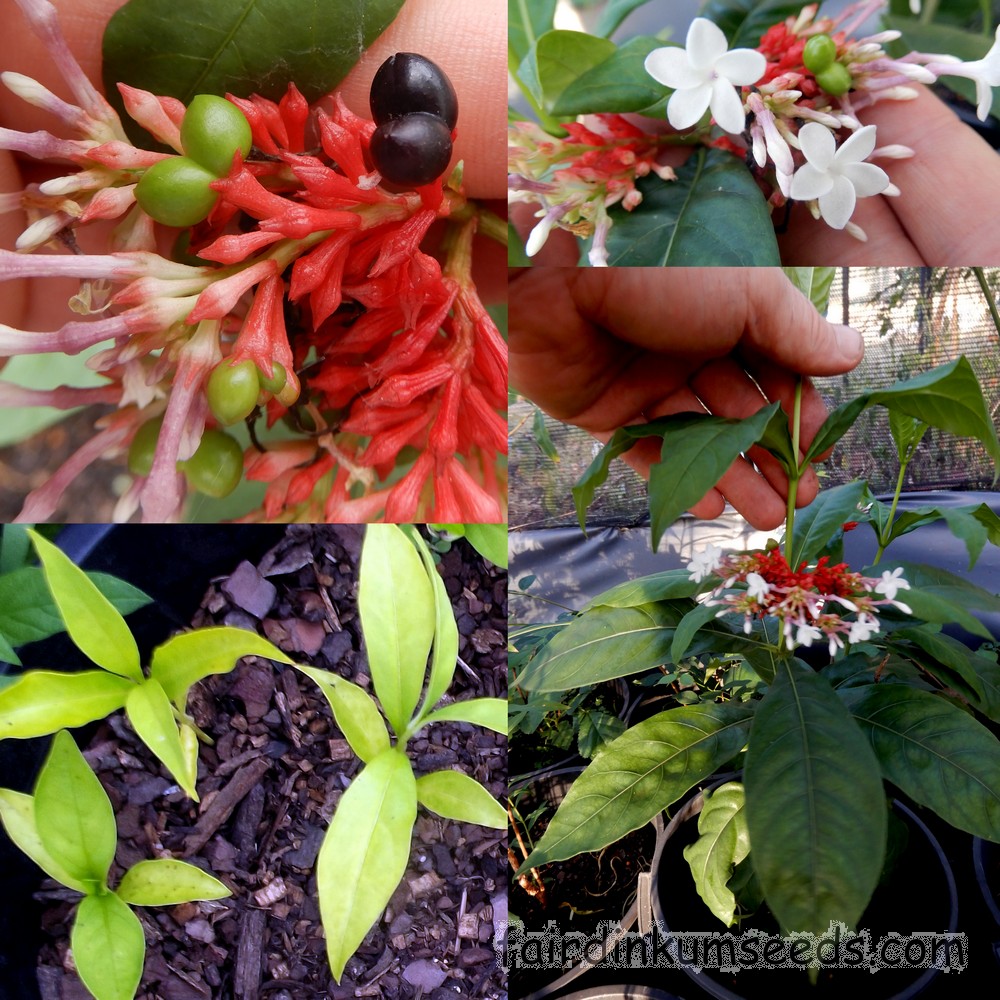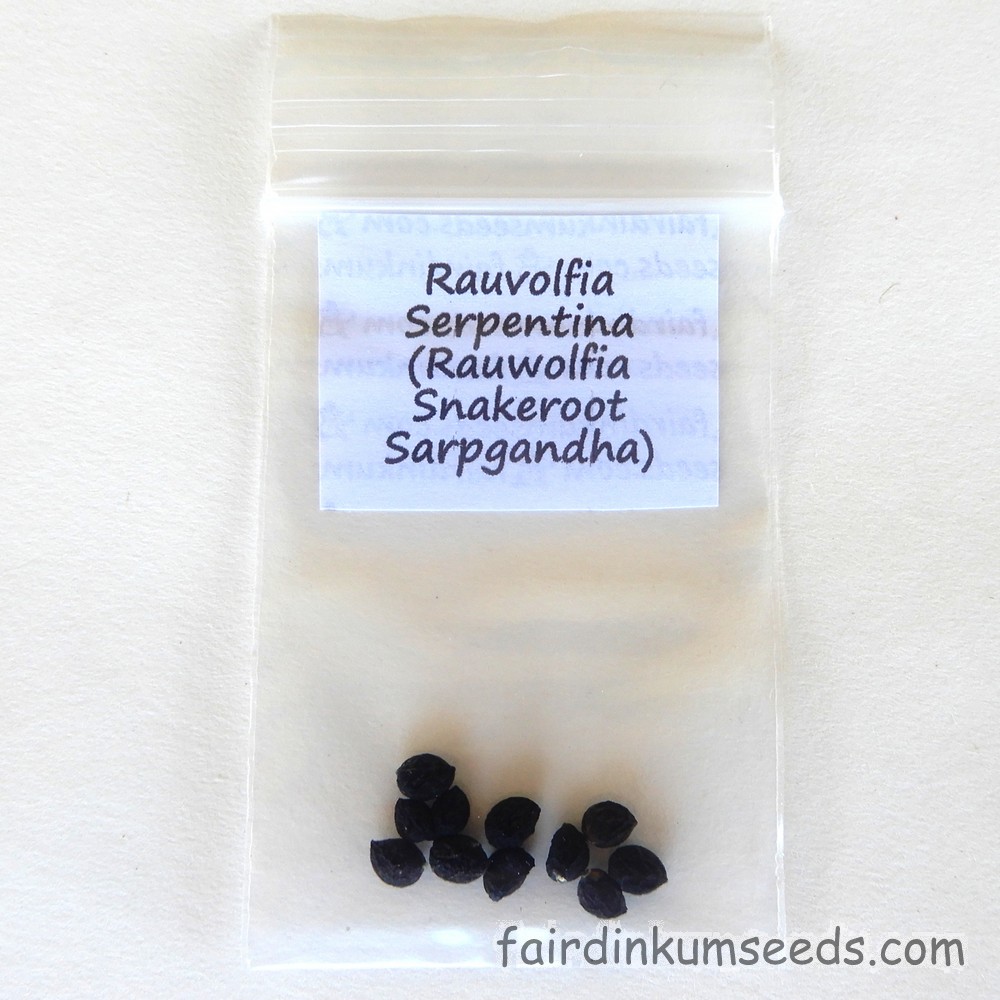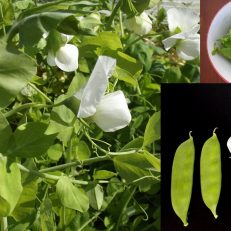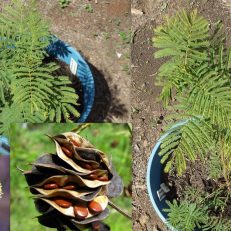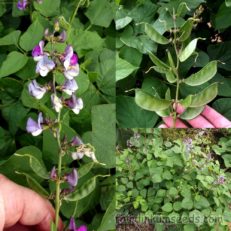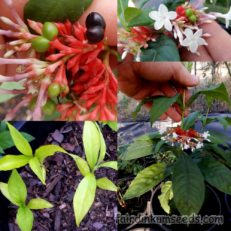Please read text!
Rauwolfia Snakeroot Sarpgandha Rauvolfia Serpentina Seeds
Packet of 10+ whole dried fruit containing fresh viable seeds!
This is a species you don’t see very often and germination is part of the reason why.
With dried seeds removed from the fruit the germination rate is often low.
In parts of India the seeds are soaked in cow urine before planting and though it sounds a bit weird, this mild Halopriming improves germination a lot.
I have been growing it for ages now and back in the day I did a heap of experiments using various soaking methods and growing mediums including my own urine.
I didn’t have a cow and didn’t feel like chasing the neighbours cattle with a bucket, so in the name of science I just used my own.
Surprisingly a urine soak does vastly improve germination in old cleaned seeds of this species!
50/50 urine and water worked best at the time, with 100% urine being a very close second, followed by everything else.
It even worked better than various amounts of GA3!
Now, while that is interesting and well worth experimenting with other hard to grow species it isn’t actually necessary with these guys.
My experiments have continued over the years and what I do these now is just pick the fully ripe fruit and dry them fast in the sun.
It’s a bit tedious daily picking such small amounts, but when stored dried in the fruit the germination rates were even better still!
Buy these whole fresh dried fruit from me, soak them for 12hrs then give them a good wash removing the flesh.(wearing gloves is a good idea).
Change the water and soak them for another 12hrs, then plant shallowly in a nice sandy soil mix.
Keep them in partial shade until germination, then they can be moved out to full sun.
I reliably get ~80% germination and ~60% survival to maturity using this method which is double what I would get even with very fresh dried clean seeds.
This poisonous medicinal species is used extensively in many places especially China and India where it has been used as a powerful sedative and to lower blood pressure for over 2,000 years!
Chemicals it contains are used pretty much worldwide for mainstream treatment of high blood pressure.
The whole plant contain 1-3% medically active alkaloids including, Rauwolfine, Reserpine, Erpentine, Neoajmaline, Yohimbine, Deserpidine, Rescinnamine, and Isoajmaline, which work to decreases heart rate and have strong hypnotic, hypotensive and sedative effects.
90% of these chemicals are found in the root bark and it is the roots that are commonly sold to the pharmaceutical companies and medical practitioners.
Used for childbirth, insanity, bowel obstruction, impotence and epilepsy with the whole plant also used for snake and scorpion poisoning, blindness, and general injury and itching.
This is a potentially dangerous plant that contains naturally occurring chemicals that produce reliable medical effects of the body.
I am not a doctor, and I only grow it as a novelty and ornamental.
Because I don’t use it for anything except looking at, I can not offer any advice or recommend its use for anything except looking at as per this link on the FAQ page..
For looking at it’s a real beauty!
Beautiful red, pink and white tubed flowers followed by bright green then eventually black fruit.
It looks both poisonous and gorgeous, and mine always have pride of place in the collection!
Commonly identified and commercially sold as Rauwolfia serpentina or Rauvolfia vomitoria, wiser folks than me say the correct botanical name is actually Rauvolfia serpentina.
It is also sometimes known as Ophioxylon album, Ophioxylon obversum, Ophioxylon salutiferum, Ophioxylon serpentinum, Ophioxylon trifoliatum, Rauvolfia canescens, Rauvolfia obverse, Rauvolfia trifoliate, Rauwolfae radix, adakai, amalpori, arachoritita, chandra, chandrabhaga, chevanamalpodi, chota-chand, churannavilpori, devil’s pepper, hadaki, harkaya, harki, indian snakeroot, keramaddinagaddi, lu fu mu, patalagandha, patalaguni, poison pepper, sarpagandha, sarpagandha, sarpagandha, sarpaghandha, serpentine wood, shegen mu, sutranabhi, suvapavalporiyam or yindu shemu.
Ok, so I said it can be hard to grow but I reckon I have that sussed now and if you do what I have described you should have similar results to me.
You might not, keep that mind you still might fail, but in my experience over many years these fresh whole dried fruit are a great starting point I reckon.
I also said it’s poisonous, it contains various chemicals and I have no experience using it for anything apart from being an ornamental and sell it for ornamental purposes only.
The last thing I need to say is about quarantine.
The basic rule for all countries and states is all seeds must be fully dried, and clean, free of insects, plant matter, or visible contamination, labelled and declared correctly, etc..
These dried berries I am selling are whole.
They are clean fruit, but they are NOT “clean seeds” as the fruit is still attached to them.
In some places the quarantine officer may reject them on that basis.
Probably won’t, but they might, and it all depends on the dudes mood at the time, something I have no control over at all.
So yeah, I can’t guarantee germination, and I can’t guarantee delivery overseas or interstate, but if you are happy to have a gamble buy some now.
If you are not happy to gamble, just don’t buy them.
Everything I know has been said in this advert so don’t waste both our time asking things I can’t answer, please…
Grown by me and the Mrs organically, no chems, no nasties, no problems!!!
